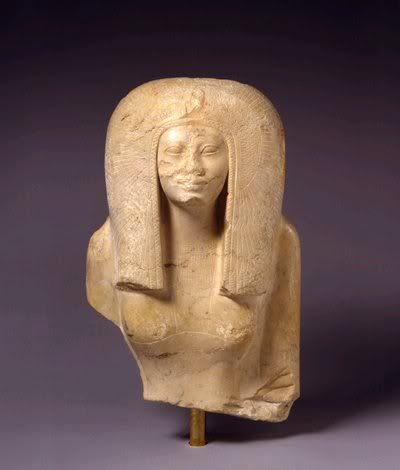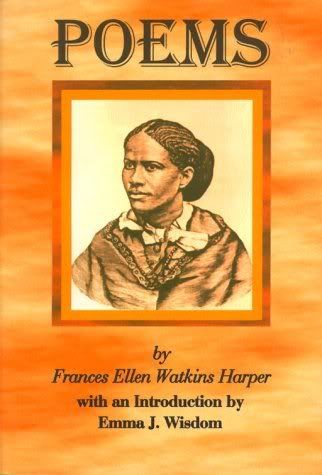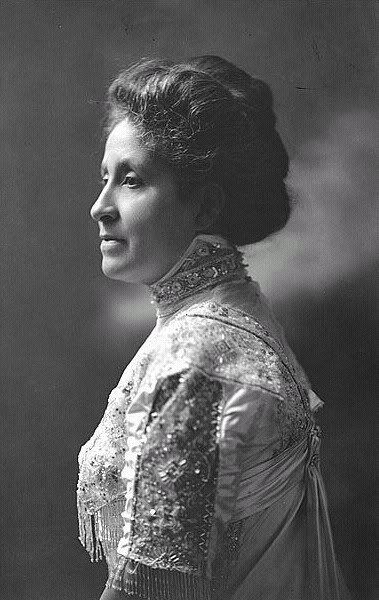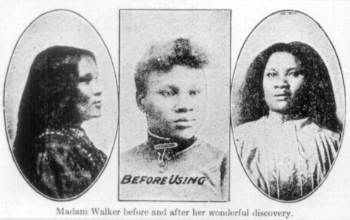Because...YOU MUST LEARN!
I know I've been slippin' on the Black History pimpin' for the past week, but now...I'm back at it like a Craftmatic! And I'mma shoot it in ya veins like a drug addict! ;-) Please it was all in my plan to hit you with the Black History BONANZA! Designed to end our month off with a BANG!
I hope you've enjoyed spending your Black History Month with me. Hopefully you've learned something from my Little Known Black History Facts. I hope you've grown to appreciate what rich history we Black Americans have and recognize our value to this "Melting Pot."
My Black people, always remember: WE COME FROM GREATNESS! Let's keep the movement going! Do something great in your life so that the subsequent generations can learn about and appreciate YOU!
As a segue between Black History Month and Women's History Month (March), today we'll celebrate the accomplishments of GREAT Black Women from all walks of life. (Cuz we ain't only good for shit-talkin', baked macaroni, and azz-shakin' video hoe'in'!)
Queen Ahmose-Nefertari
Royalty
Pharaoh Ahmose (ruled 1709-1683 BC) founded the Negro Eighteenth Egyptian Dynasty. Ahmose-Nefertari, his wife, was highly distinguished and did much to help reconstruct the country after centuries of foreign rule. She held the position of Second Prophet of Amen and also that of Divine Wife.
In these roles she performed various civil and religious duties. She maintained a college of priestesses, controlled the divine offerings to the deity Amen, was in charge of the workers of the temple fields and also controlled a number of dignitaries. She later ruled the country as Queen-Regent for Amenhotep I, her son. Some building projects date back to her time such as the reconstruction of the Deir-el-Medina necropolis. Amenhotep I succeeded her when he became of age. Of this great woman, Sir Flinders Petrie, master of the British archaeologists, wrote that she was "the most venerated figure of Egyptian history."
Frances Ellen Watkins Harper
Writer
Born on September 24, 1825. At a young age, Frances was orphaned. Harper received her education at a school for free African-Americans run by her uncle, William Watkins. The school was located at the present day site of the Baltimore Convention Center. At the age of 13, Harper's formal education came to an end when she took a job as a nursemaid.
Harper's first publication was a collection of poetry and prose entitled Autumn Leaves. It was published while she was a teenager. She published another volume of poems entitled Poems on Miscellaneous Subjects (1857). This work sold over 10,000 copies within its first five years of publication.
In 1869, Harper published Moses, A Story of the Nile. After three years of writing, she published Sketches of Southern Life. Some of her other works include Poems, Atlanta Offering, Effie Alton, Eventide, Idylls of the Bible, and The Sparrow's Fall. Her only novel is Iola Leroy: On Shadows Uplifted, a book about a wealthy slaveowner who falls in love with and marries an African-American woman. Harper was, by far, the most popular poet of her time. Her poetry reflected her views on the abolition of slavery, women's rights and other social ills of her time period
Mary Church Terrell
Activist
Born on September 23, 1863, in Memphis, Tennessee, Terrell became an educator, political activist, and the first president of the National Association of Colored Women. Terrell understood the value of education.
In 1898, Mary Church Terrell wrote how African-American women "with ambition and aspiration [are] handicapped on account of their sex, but they are everywhere baffled and mocked on account of their race." She fought for equality through social and educational reform.
Madame C. J. Walker
Inventor
Born Sarah Breedlove on December 23, 1867 in Delta, Louisiana, the daughter of Owen and Minerva Breedlove. Her parents were former slaves working as sharecroppers and both died when Sarah was a child. As a result, Sarah was forced to move from one household to another. At age seven, she moved in with her sister Louvina and her husband. After suffering abuse from Louvina's husband, Sarah ran away and married Moses McWilliams when she was 14 years old. In 1885, she gave birth to their daughter Lelia. Two years later, Moses was murdered by a White lynch mob.
After this tragedy, Sarah moved with her daughter to St. Louis, Missouri where she worked as a cook and housecleaner. Unfortunately, all of the stress and hardship had begun to take its toll on her and she found her hair falling out. She tried several products which claimed would help her condition but to no avail. At this point Sarah had a dream in which a "big Black man appeared to me and told me what to mix up for my hair. Some of the remedy was grown in Africa, but I sent for it, put it on my scalp, and in a few weeks my hair was coming in faster than it had ever fallen out." After she shared her formula with some friends and found it successful for them as well, she realized that there were almost no hair products available for Blacks. She therefore decided to go into business, selling hair products to Black women.
In 1905 Sarah's brother died and she moved to Denver, Colorado to live with her sister-in-law. When she arrived in Denver she had only $2.00 in her pocket yet she worked during the day as a cook in order to finance her part time business. At this point she met Charles Joseph "C.J." Walker, a newspaperman with an innate ability for marketing. She married Walker on January 4, 1906 and the couple set up the "Madam CJ Walker Manufacturing Company" and began placing advertisements in Black newspapers throughout the United States. Although they proved a successful team, they disagreed as to how much the company should grow. After years of struggling and suffering, Sarah wanted her company to grow immensely and divorced him in order to devote herself to the business (he stayed on as a sales agent for the company.). She continued on with many of the ideas he had passed on to her, including going door-to-door to sell the products. Her hard work paid off and in 1906 she brought her daughter Lelia, a recent college graduate, in to manage the company.
While Lelia ran much of the company, Sarah traveled across the country and throughout Latin America and the Caribbean marketing the products and developing new ones. She also sought to bring more women into the company, desiring to empower them and give them a way of rising above the constraints set by a male dominated society.
In 1908, Sarah started Lelia College in Pittsburgh, Pennsylvania, which trained women to sell her products door-to-door and by 1910 had more than 1,000 sales agents. In that year, she moved the company's headquarters to Indianapolis, Indiana and soon the company grew beyond anyone's expectations. By 1914, the woman who only nine years earlier had only $2.00 to her name was now worth more than one million dollars. Her products ranged from hair conditioners and facial creams to hot combs specially made for the hair of Black consumers.
After her early suffering and poverty plagued existence, Sarah McWilliams had looked for a way out and as Madame C.J. Walker was able to purchase a 34 room mansion built off of the Hudson River in New York. When she died on May 25, 1919, she was mourned throughout the Black community as a pioneer and a Black industrialist. For many women, White and Black, however, she had served as an inspiration and a role model.
Alice Coachman
Athlete
Born: Nov. 9, 1923
Alice Coachman became the first black woman to win an Olympic gold medal with her win in the high jump in 1948 (London). She broke the high school and college high jump records despite not wearing any shoes. Coachman was a member of the National Track & Field Hall of Fame.
Shirley Ann Jackson
Physicist
Shirley A. Jackson was born in 1946. In 1973, she became the first Black woman to graduate with a Ph.D. in physics from the Massachusetts Institute of Technology. There were few women and fewer Black women at MIT, but Shirley resolved she would succeed anyway. She says:"I feel fortunate that I never had to think about whether a woman or a Black could be a scientist until I was in the middle of it."
After graduating from MIT, she became a research associate at the Fermi National Accelerator Laboratory. Then she was a visiting scientist at the European Organization for Nuclear Research in Geneva, Switzerland. She has worked at AT&T/Bell Labs since 1976. She researches the nature of matter and how it behaves. She lectures and teaches at MIT and other universities. She lectured at the NATO International Advanced Study Institute in Antwerp, Belgium in 1982. Her research on high-energy theory has given her international recognition.
Friday, February 29, 2008
BLACK HISTORY BONANZA!
Labels: Sayin' it LOOOUUUUDDDDD
Subscribe to:
Post Comments (Atom)





1 comments:
glad i can come here and get my history lesson in april! black history all year long!!!!!!
Post a Comment